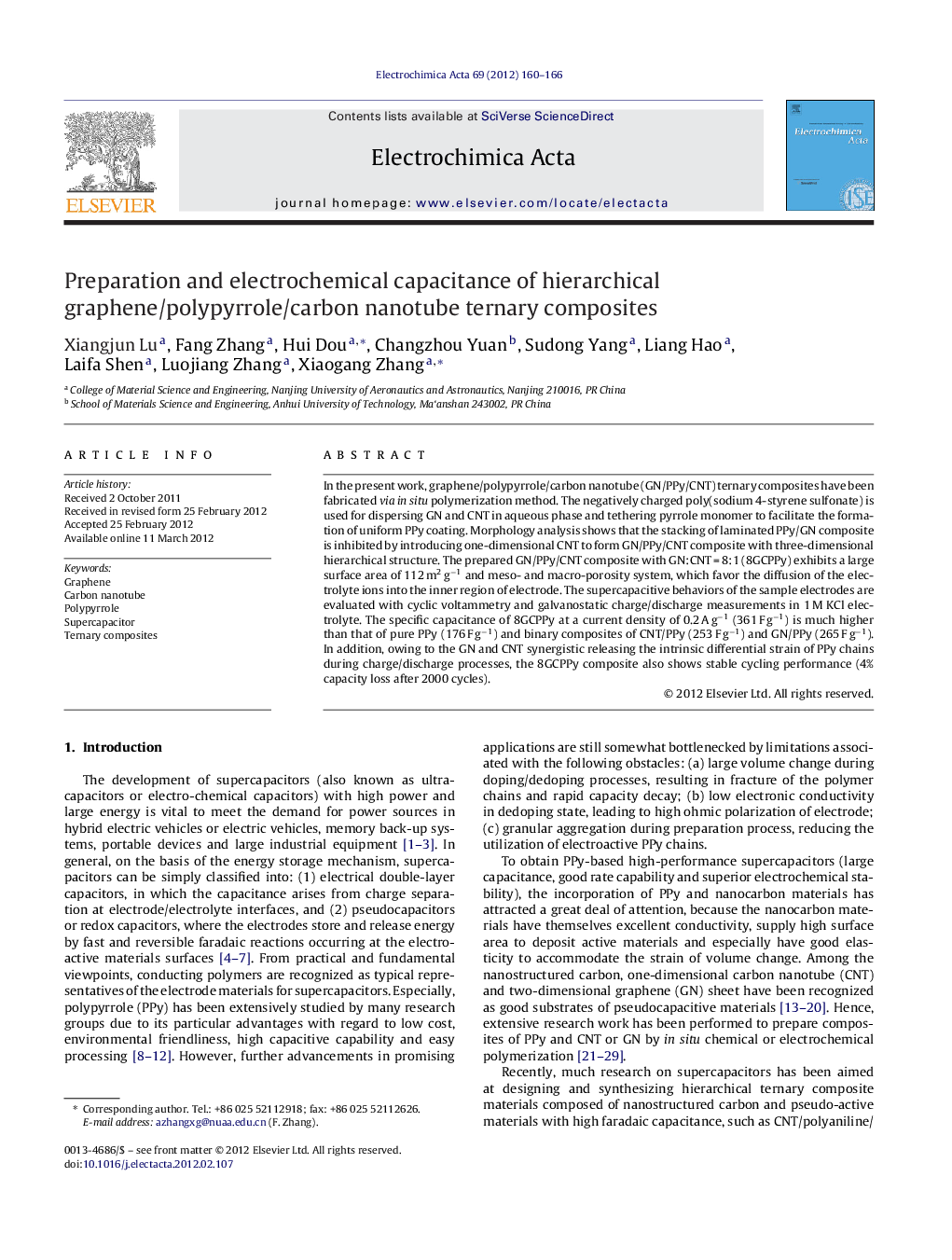| Article ID | Journal | Published Year | Pages | File Type |
|---|---|---|---|---|
| 188740 | Electrochimica Acta | 2012 | 7 Pages |
In the present work, graphene/polypyrrole/carbon nanotube (GN/PPy/CNT) ternary composites have been fabricated via in situ polymerization method. The negatively charged poly(sodium 4-styrene sulfonate) is used for dispersing GN and CNT in aqueous phase and tethering pyrrole monomer to facilitate the formation of uniform PPy coating. Morphology analysis shows that the stacking of laminated PPy/GN composite is inhibited by introducing one-dimensional CNT to form GN/PPy/CNT composite with three-dimensional hierarchical structure. The prepared GN/PPy/CNT composite with GN:CNT = 8:1 (8GCPPy) exhibits a large surface area of 112 m2 g−1 and meso- and macro-porosity system, which favor the diffusion of the electrolyte ions into the inner region of electrode. The supercapacitive behaviors of the sample electrodes are evaluated with cyclic voltammetry and galvanostatic charge/discharge measurements in 1 M KCl electrolyte. The specific capacitance of 8GCPPy at a current density of 0.2 A g−1 (361 F g−1) is much higher than that of pure PPy (176 F g−1) and binary composites of CNT/PPy (253 F g−1) and GN/PPy (265 F g−1). In addition, owing to the GN and CNT synergistic releasing the intrinsic differential strain of PPy chains during charge/discharge processes, the 8GCPPy composite also shows stable cycling performance (4% capacity loss after 2000 cycles).
Graphical abstractTernary nanocomposites composed of graphene (GN), polypyrrole (PPy) and carbon nanotube (CNT) have been prepared via in situ chemical polymerization, where the introduction of one-dimensional CNT can inhibit the stacking of nanosheet-like GN/PPy to form three-dimensional hierarchical architecture.Figure optionsDownload full-size imageDownload as PowerPoint slideHighlights► Ternary composites composed of GN, PPy and CNT were prepared. ► The introduction of CNT can inhibit the stacking of nanosheet-like GN/PPy. ► The GN/PPy/CNT with GN:CNT = 8:1 (8GCPPy) shows surface area of 112 m2 g−1 and porosity ► The 8GCPPy exhibits the largest the specific capacitance of 361 F g−1 ► The 8GCPPy shows long cycling life stability (4% capacity loss after 2000 cycles).
